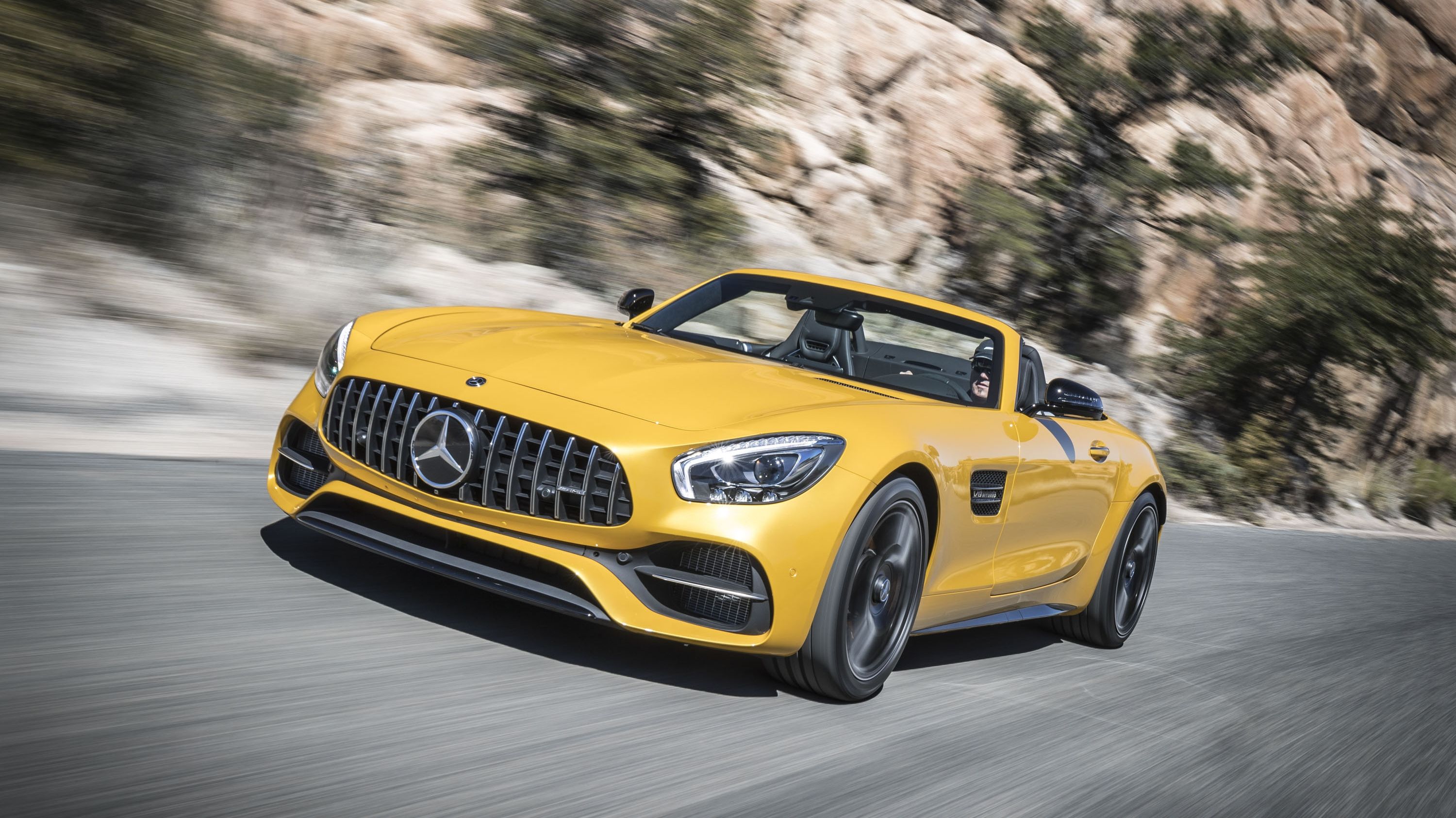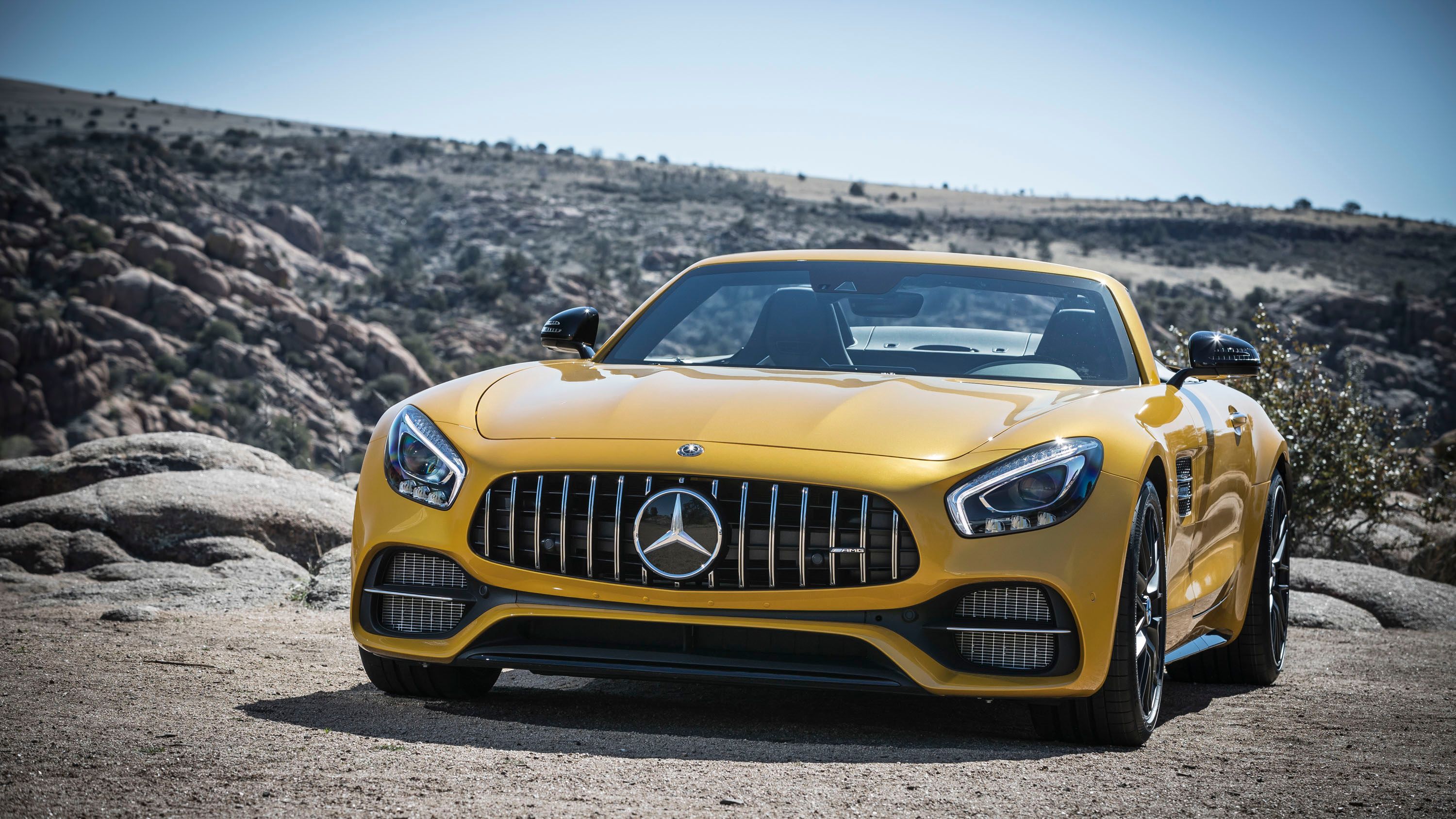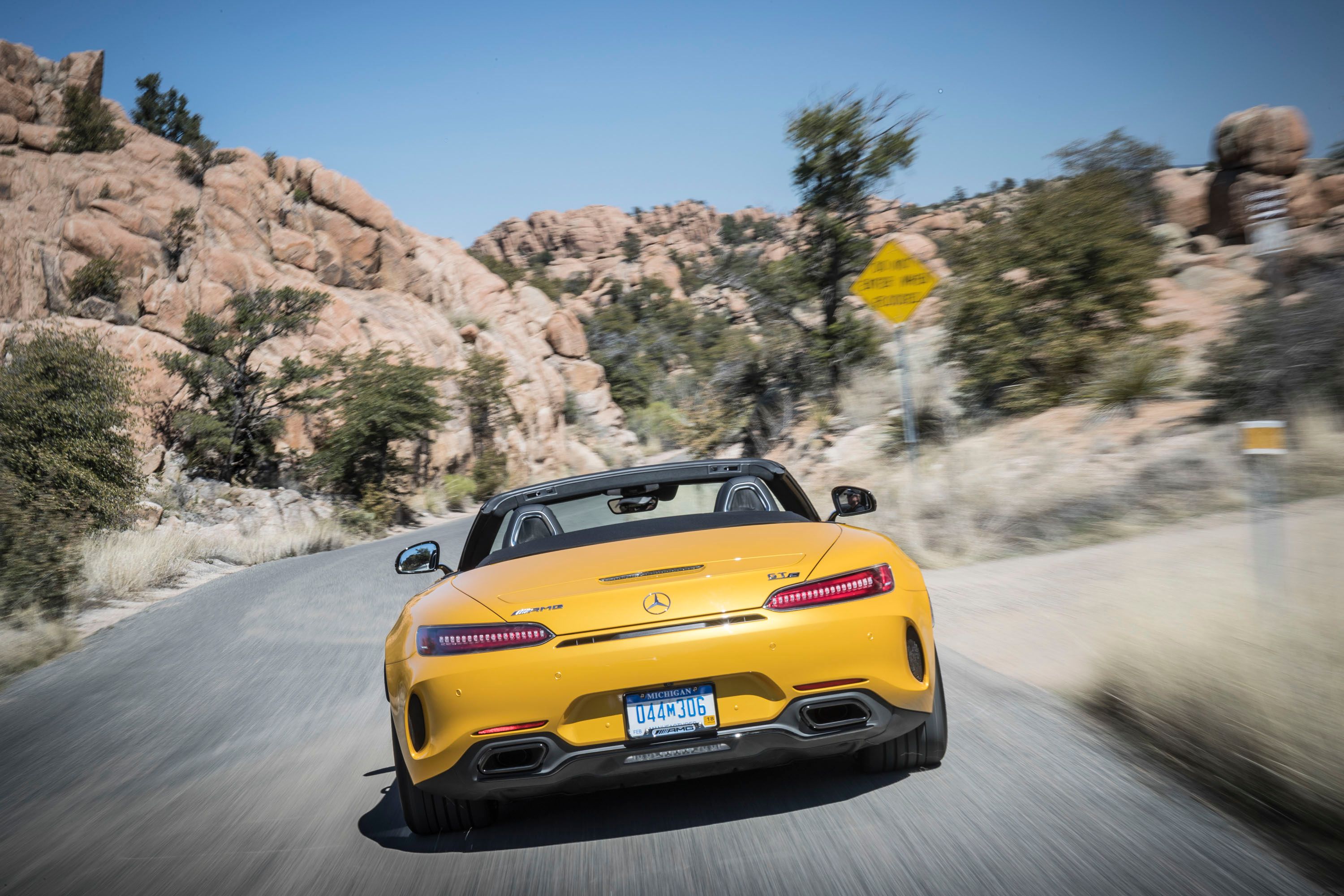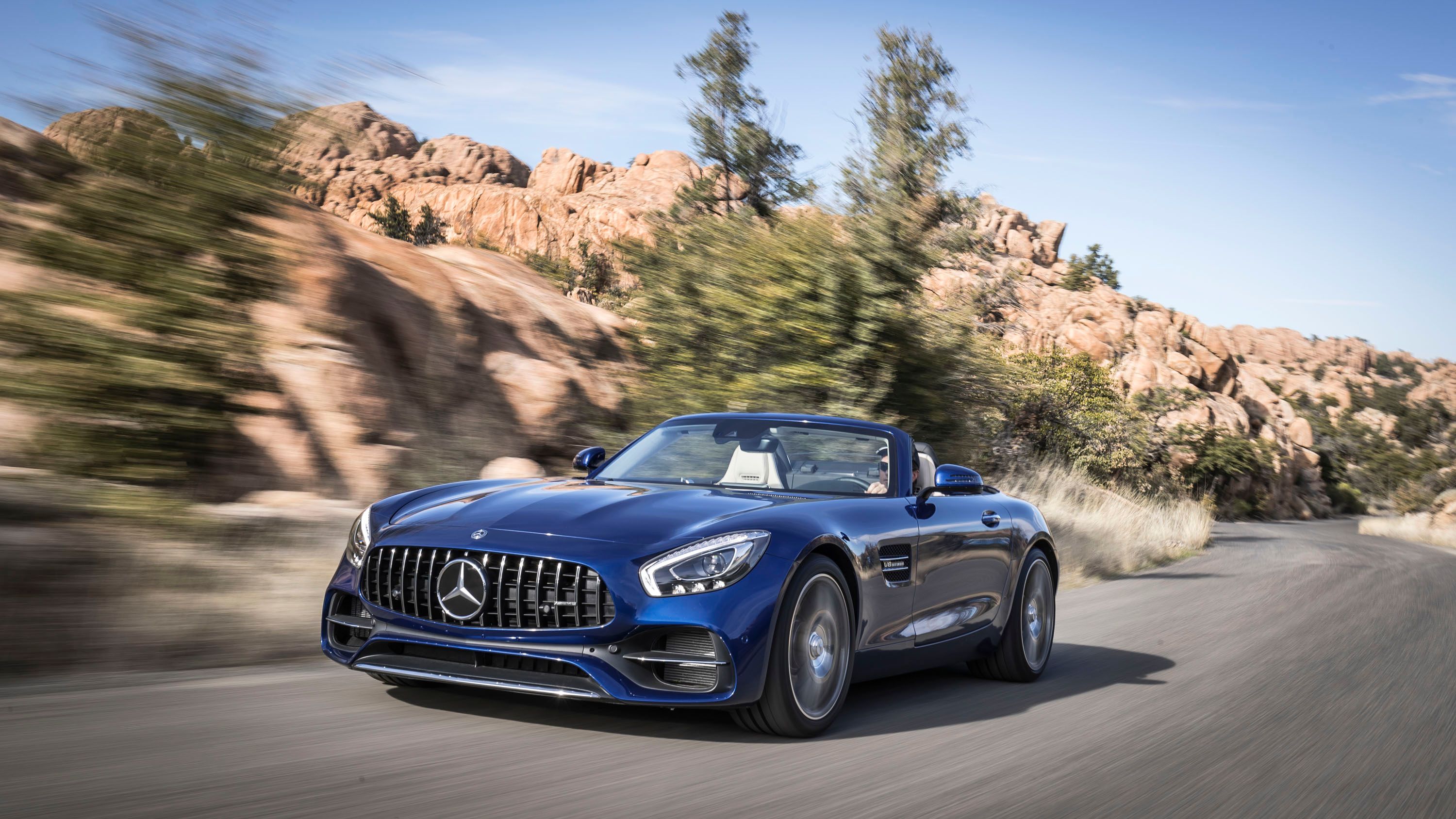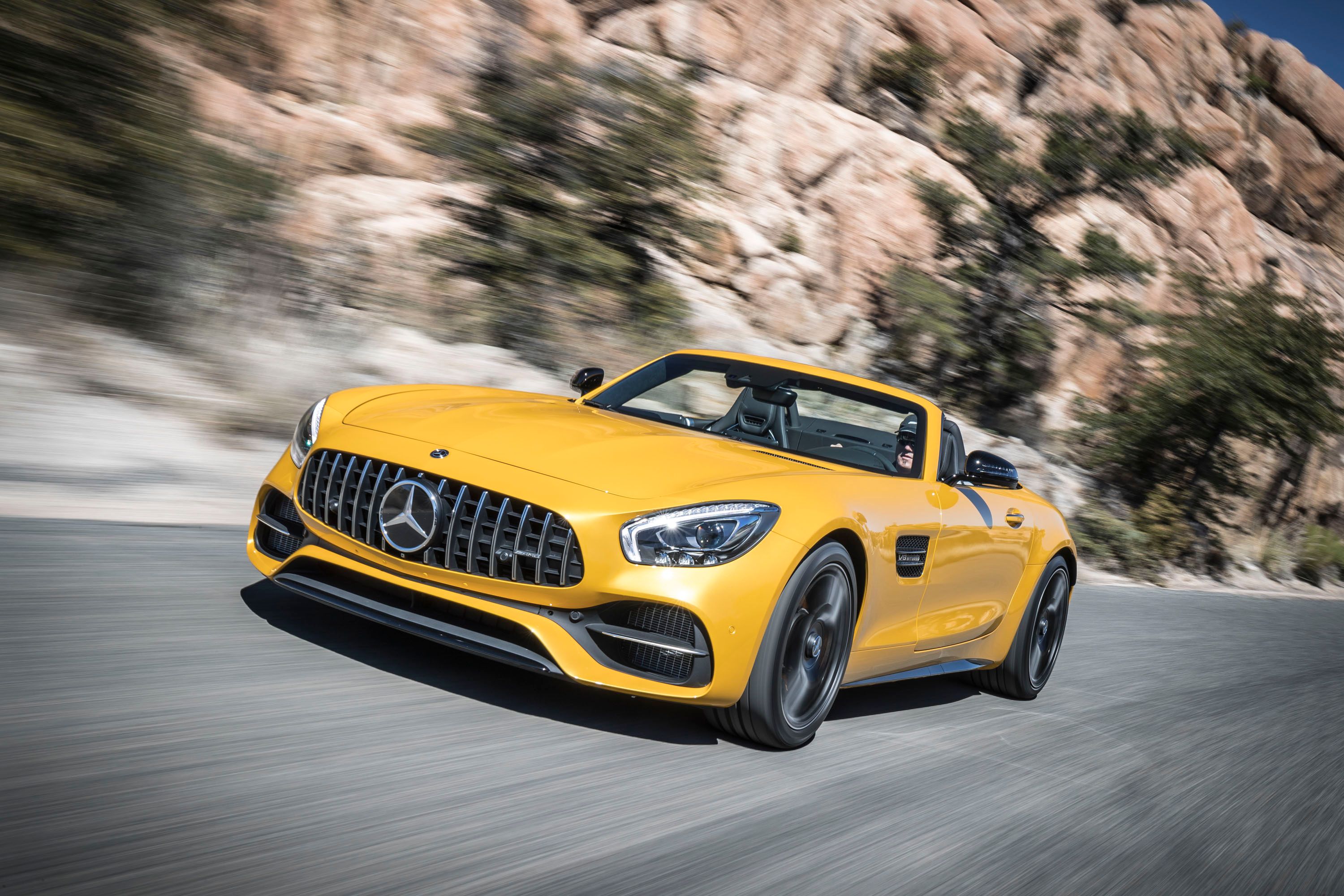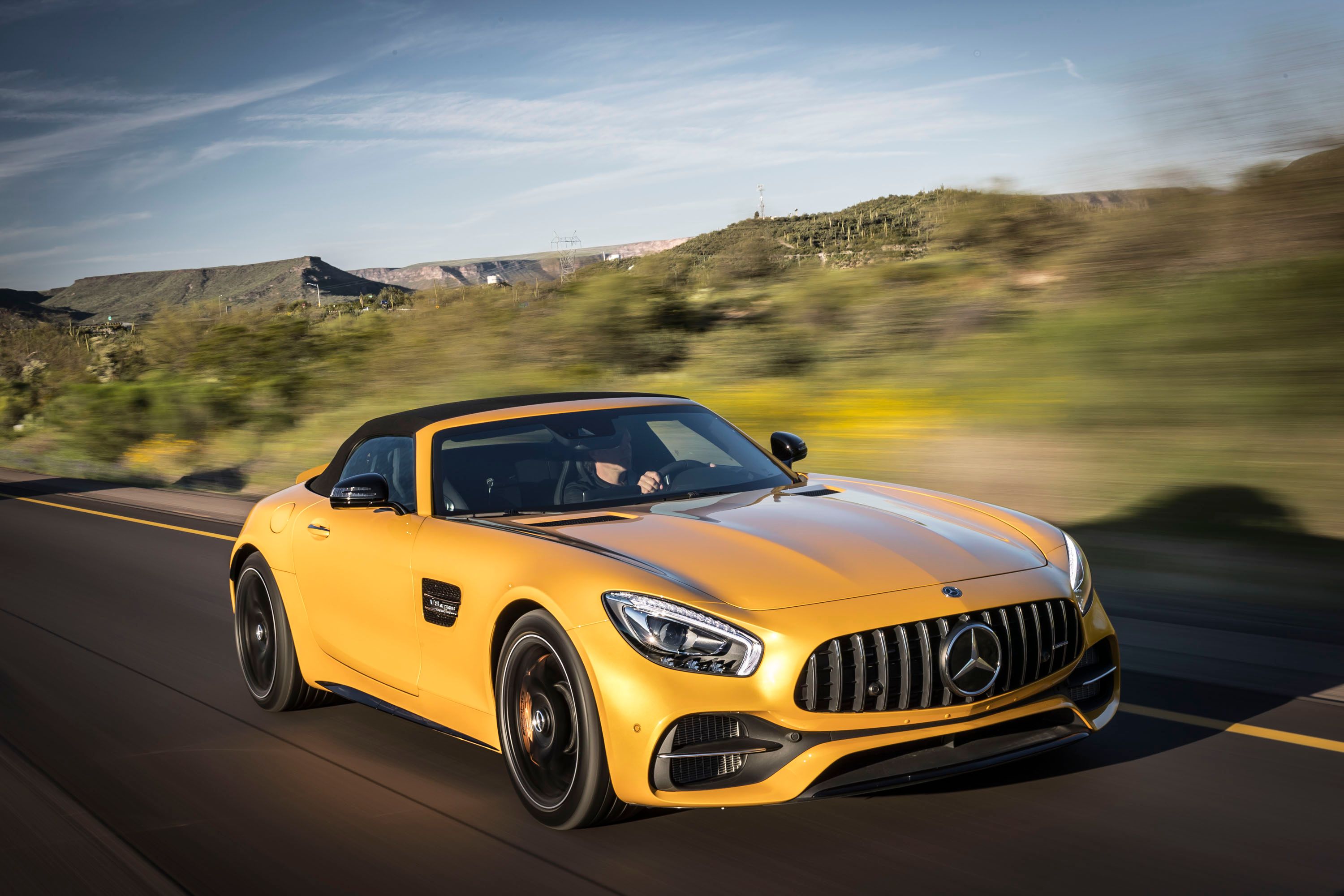The Mercedes-AMG GT sports car family has grown to include no fewer than five road-going models in two years, and it's now getting an upgrade for the 2018 model year. If it sounds familiar it's because this update was announced a few months back, but Mercedes-Benz just confirmed that the revised design features and boosted drivetrains will make it to the U.S. for 2018. Or we could say that it has been reissued to remind us all that the AMG division is celebrating its 50th anniversary in 2017.
In case you haven't been following us lately, the highlights for this upgrade include an AMG Panamericana grille and an active air management system for all versions of the sports car. Mercedes also introduced new output variants for the 4.0-liter V-8, ranging from 469 horsepower and 465 pound-feet of torque to 577 horsepower and 516 pound-feet of twist. On top of that, each model gained specific improvements in the chassis department.
Continue reading for the full story.
The Visuals
Arguably the most important change design-wise is the AMG Panamericana grille now being offered on all models. Previously seen on the GT R and race-spec GT3 versions only, the motorsport-inspired grille is now offered across the range, including the entry-level version of the AMG GT. Another feature that was introduced with the GT R and is now available for all models is the Airpanel active air management system. The device consists of Vertical louvers in the bottom of the front bumper, which can be opened and closed by an electric motor in one second to provide the necessary cooling. As part of this new design measure, the engine oil cooler on all AMG GT models has been moved from the front to the wheel arches.
The Power
Upgrades for the 4.0-liter V-8 engine begin with the entry-level model, which gained an extra 13 horsepower and 22 pound-feet of torque. Output is now rated at 469 horses and 465 pound-feet for both the coupe and roadster versions. In the GT S, the boost accounts for 12 horsepower and 15 pound-feet, taking it up to 515 horses and 494 pound-feet of twist. Next up is the GT C, which was introduced only a few months back with 550 horses and 502 pound-feet. Finally, the range-topping GT R model boasts an impressive 577 horsepower and 516 pound-feet of torque.
Chassis and Suspension
Most chassis upgrades were actually designed for the GT C, which is a brand-new model rather than a facelift. The GT C uses both the wider rear track and the AMG Ride Control sports suspension of the GT R model, as well as the rear-axle steering. The system allows an even better combination of agility and stability. Up to a speed of 62 mph, the rear wheels point in the opposite direction relative to the front wheels allowing the AMG GT C to turn into corners with significantly higher agility. Once the speed rises above 62 mph, the system points the rear wheels in the same direction as the front wheels for improved handling.
The rear-axle, limited-slip differential is standard on all model but the base AMG GT, meaning you will get it with the GT S, GT C, and GT R models.
New Options
Both the standard and S model benefit from new options. Highlights include the AMG Interior Night package, which comes standard on the GT R, and the AMG Exterior Carbon Fiber bundle with adds various carbon components to the body. Mercedes also offers new wheel designs, Exclusive Nappa leather trim in diamond-patterned Macchiato Beige, and the AMG Track Pace feature. The latter includes an app that analyzes the driver's performance on the track and saves lap or sector times that can be shared on various social media platforms.
References
Mercedes-AMG GT
Read our full review on the Mercedes-AMG GT S.
Mercedes-AMG GT S
Read our full review on the Mercedes-AMG GT S.
Read our full review on the Mercedes-AMG GT S.1}
Read our full review on the Mercedes-AMG GT C Coupe.
Mercedes-AMG GT C Roadster
Read our full review on the Mercedes-AMG GT C Roadster.
Mercedes-AMG GT R
Read our full review on the Mercedes-AMG GT R.

